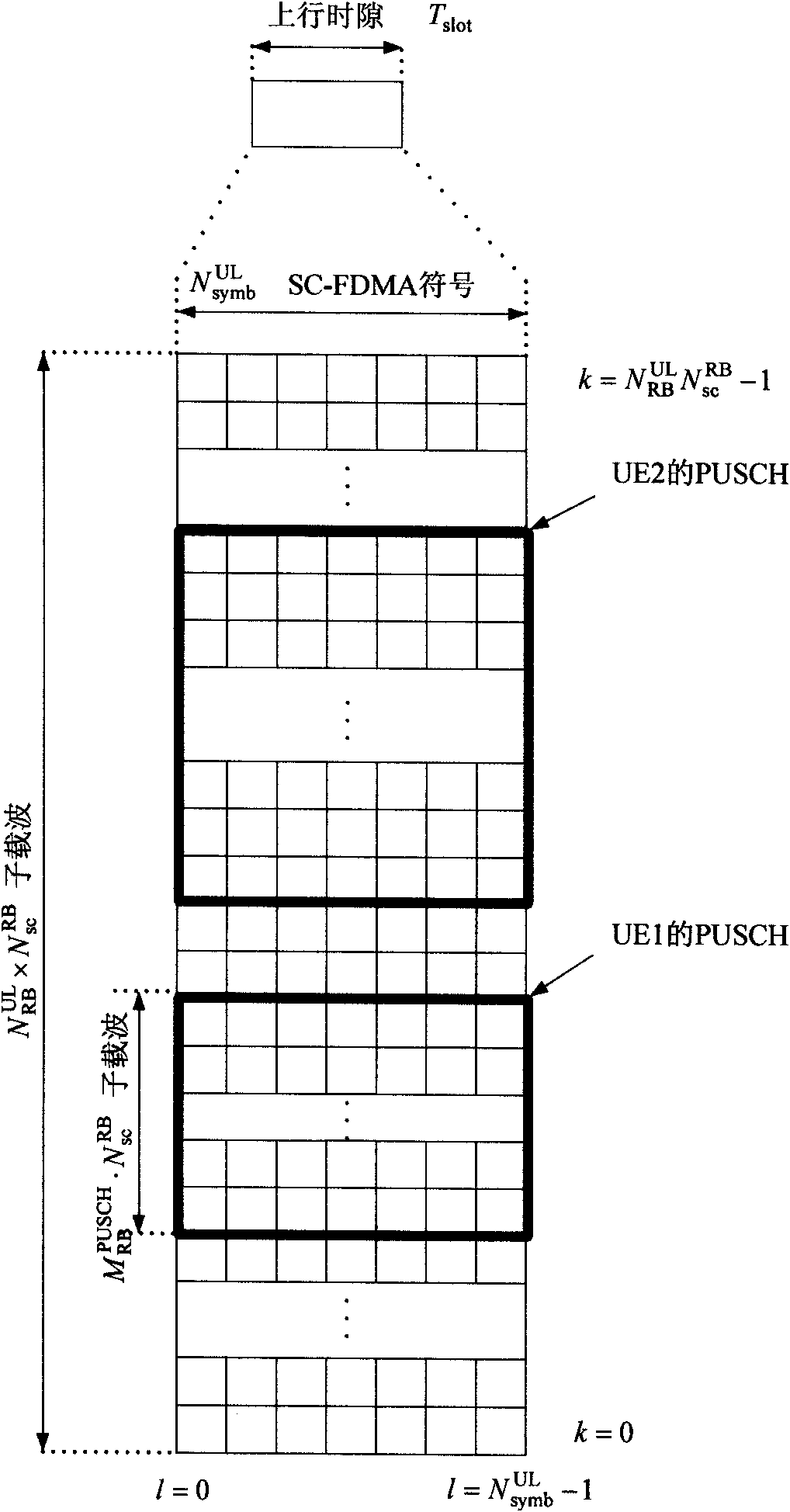Method for indicating wireless channel resource allocation, base station, decoding method and terminal
A resource allocation and wireless channel technology, applied in the direction of wireless communication, electrical components, etc., to achieve the effect of easy implementation, satisfying the use of wireless channel resources, and saving costs
- Summary
- Abstract
- Description
- Claims
- Application Information
AI Technical Summary
Problems solved by technology
Method used
Image
Examples
Embodiment 1
[0114] The system bandwidth is 5MHz, 25RB. Divide 25RB into two clusters, RBG size is 2RB or 1RB, there are 13 RBGs in total, the 1st to 12th RBG each contain 2RB, the 13th RBG contains 1 RB, each cluster contains 1, 2 or 3 RBG. Such as Figure 9 shown. The constructed resource allocation table is shown in Table 3.
[0115] Table 3 Resource allocation table for low-frequency to high-frequency mapping of two clusters in 25RB time division
[0116]
[0117] A cluster with 1 RBG has 13 states, and a cluster with 2 RBGs has 12 states. The resource allocation for each cluster is indicated by 5 bits, expressed as and 5 bits support 32 states.
[0118] For the first cluster and the second cluster, resource allocation instructions are performed from the low-frequency end to the high-frequency end of the system bandwidth, that is, the 13 states of INDEX from 0 to 12 in Table 3 indicate that the base station allocates one continuous RBG to the terminal, RBG position index f...
Embodiment 2
[0122] The system bandwidth is 5MHz, 25RB. Divide 25RB into two clusters, RBG size is 2RB or 1RB, there are 13 RBGs in total, the 1st to 12th RBG each contain 2RB, the 13th RBG contains 1 RB, each cluster contains 1, 2 or 3 RBG. Such as Figure 10 shown. The two constructed resource allocation tables are shown in Table 3 and Table 4.
[0123] Table 4 Resource allocation table for high-frequency to low-frequency mapping of two clusters in 25RB time division
[0124]
[0125] A cluster with 1 RBG has 13 states, and a cluster with 2 RBGs has 12 states. The resource allocation for each cluster is indicated by 5 bits, expressed as and 5 bits support 32 states.
[0126]For the first cluster, resource allocation instructions are performed from the low-frequency end to the high-frequency end of the system bandwidth, that is, the 13 states of INDEX from 0 to 12 in Table 4 indicate that the base station allocates one continuous RBG to the terminal, and the RBG position index...
Embodiment 3
[0131] The system bandwidth is 5MHz, 25RB. Divide 25 RB into three clusters, the RBG size is 2RB or 1RB, there are 13 RBGs in total, the 1st to 12th RBG each contain 2 RBs, the 13th RBG contains 1 RB, and each cluster contains 1, 2 or 3 RBG. Such as Figure 11 shown. The constructed resource allocation table is shown in Table 5.
[0132] Table 5 Resource allocation table for low-frequency to high-frequency mapping of three clusters in 25RB time division
[0133]
[0134] A cluster with 1 RBG has 13 states, and a cluster with 2 RBGs has 12 states. The resource allocation for each cluster is indicated by 5 bits, expressed as and 5 bits support 32 states.
[0135] For the first cluster, the second cluster, and the third cluster, resource allocation instructions are performed from the low-frequency end to the high-frequency end of the system bandwidth, that is, the 13 states of INDEX from 0 to 12 in Table 5 indicate that the base station allocates one continuous RBG, ...
PUM
 Login to View More
Login to View More Abstract
Description
Claims
Application Information
 Login to View More
Login to View More - R&D
- Intellectual Property
- Life Sciences
- Materials
- Tech Scout
- Unparalleled Data Quality
- Higher Quality Content
- 60% Fewer Hallucinations
Browse by: Latest US Patents, China's latest patents, Technical Efficacy Thesaurus, Application Domain, Technology Topic, Popular Technical Reports.
© 2025 PatSnap. All rights reserved.Legal|Privacy policy|Modern Slavery Act Transparency Statement|Sitemap|About US| Contact US: help@patsnap.com



